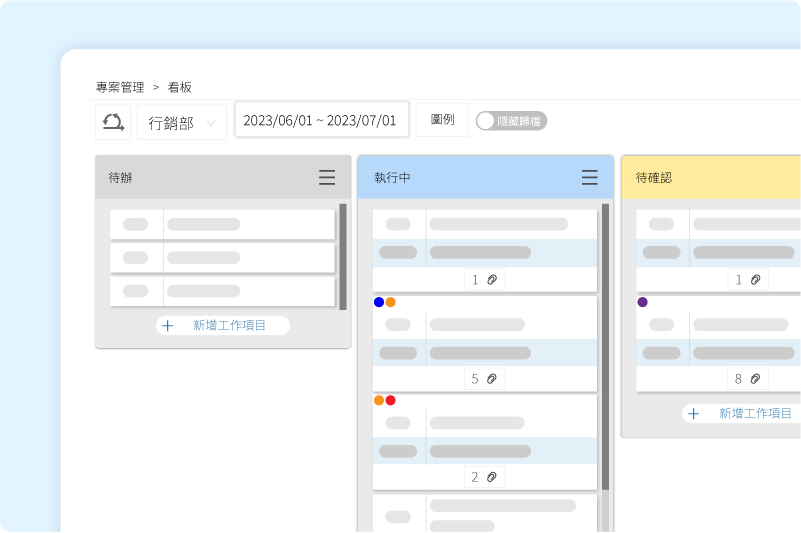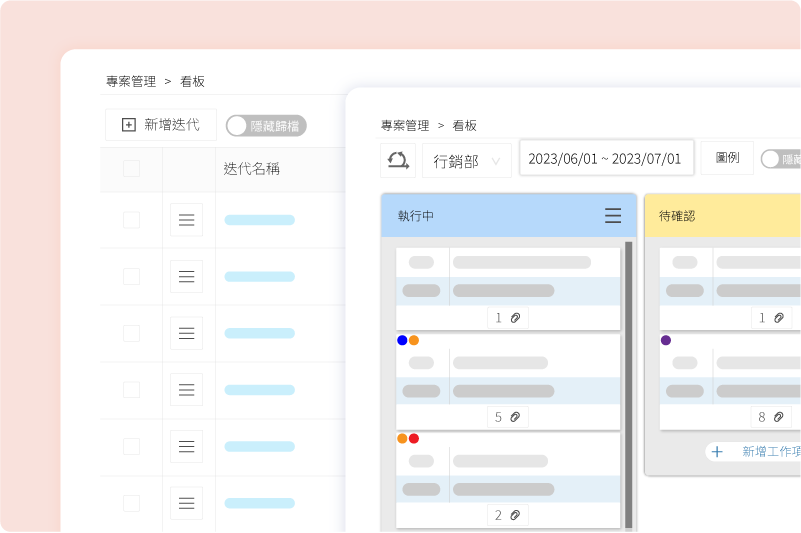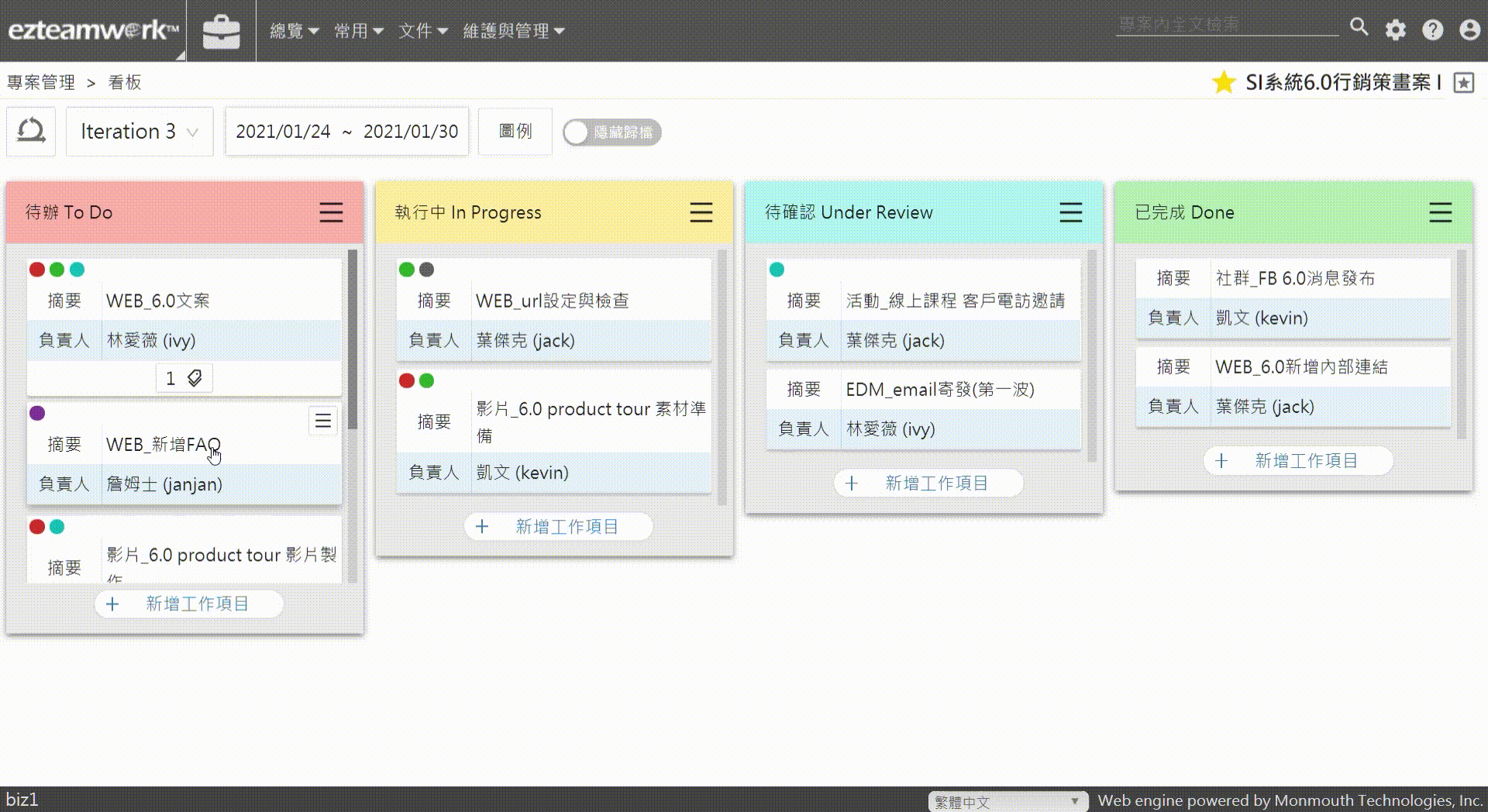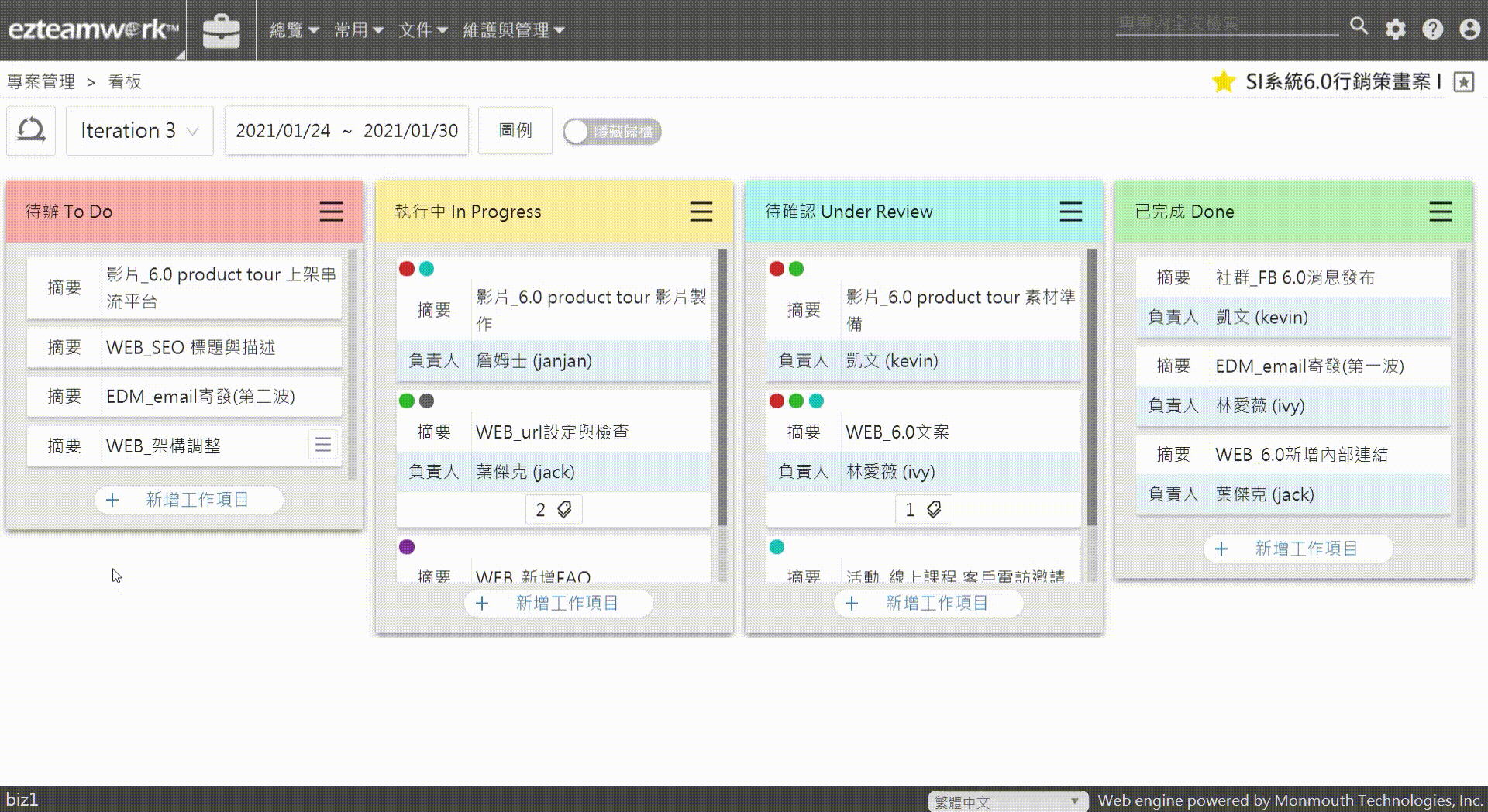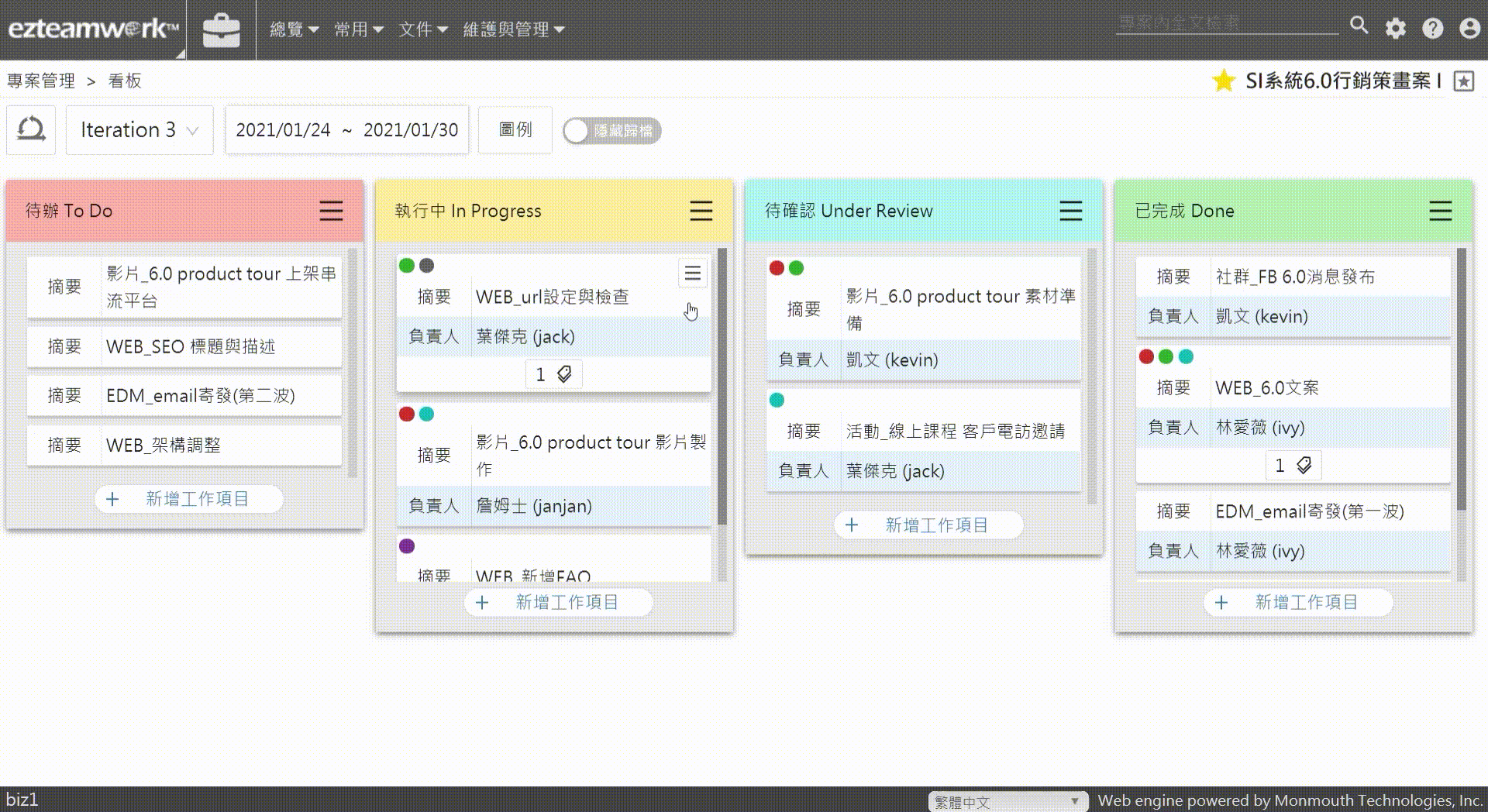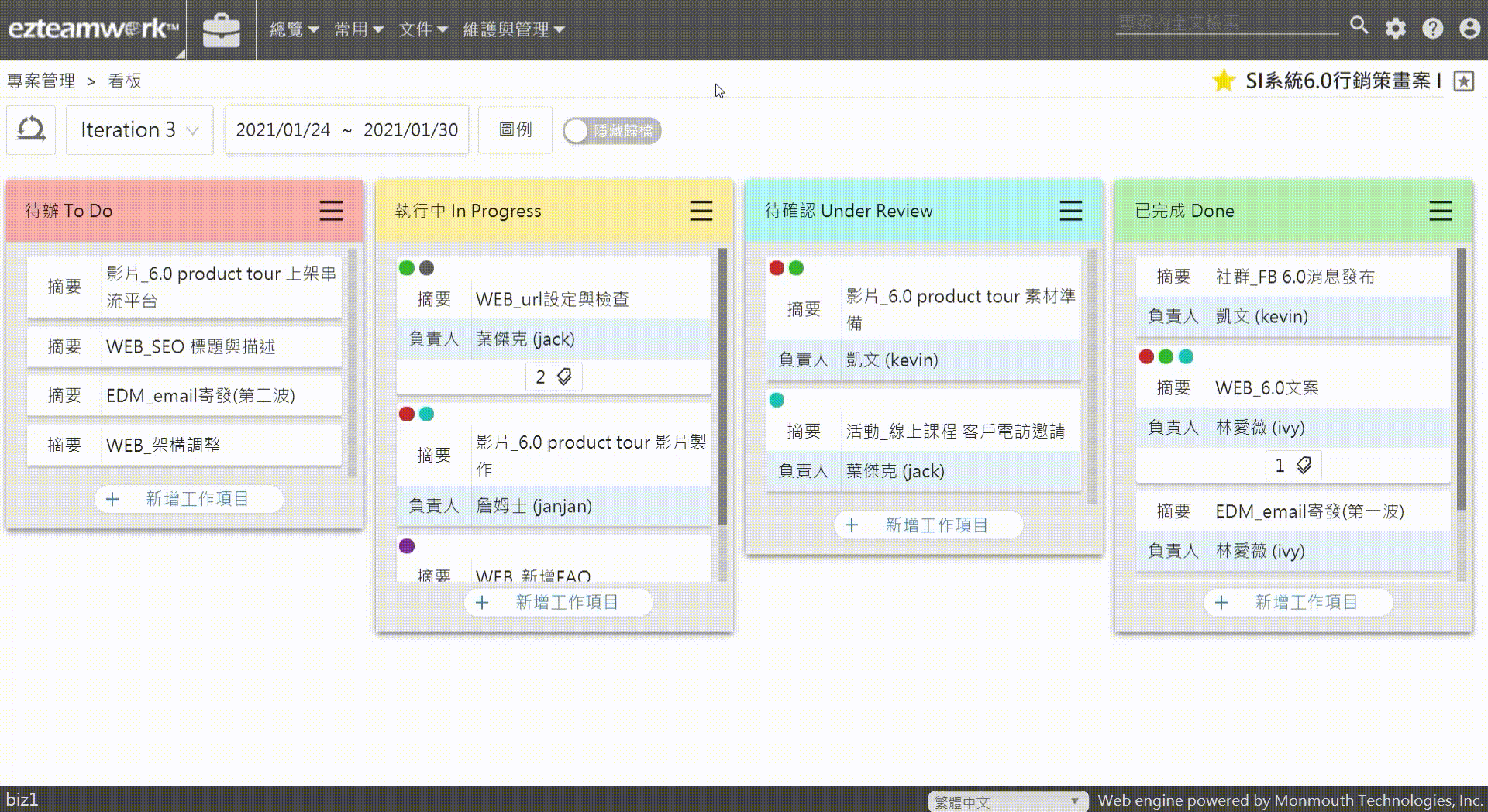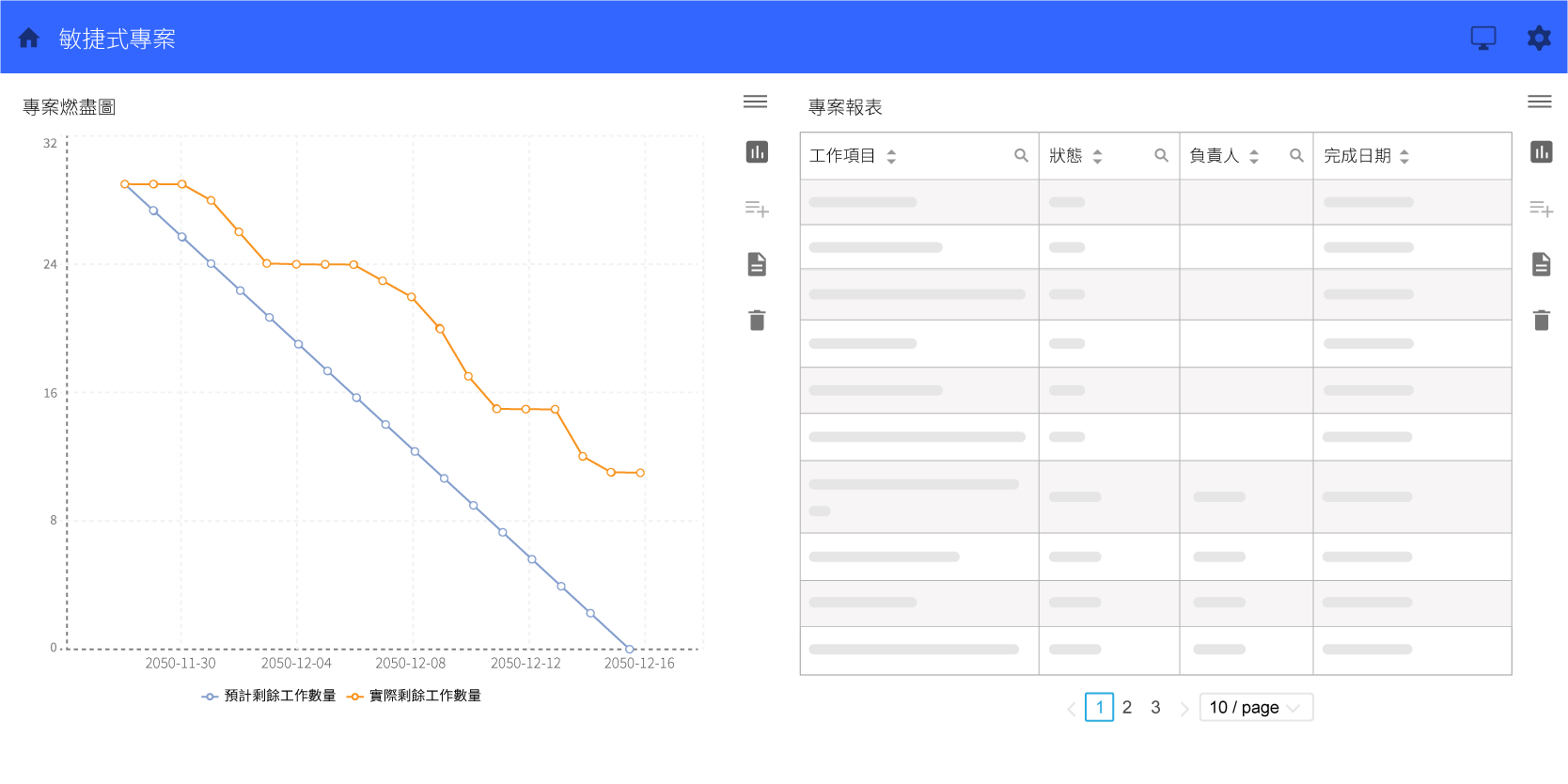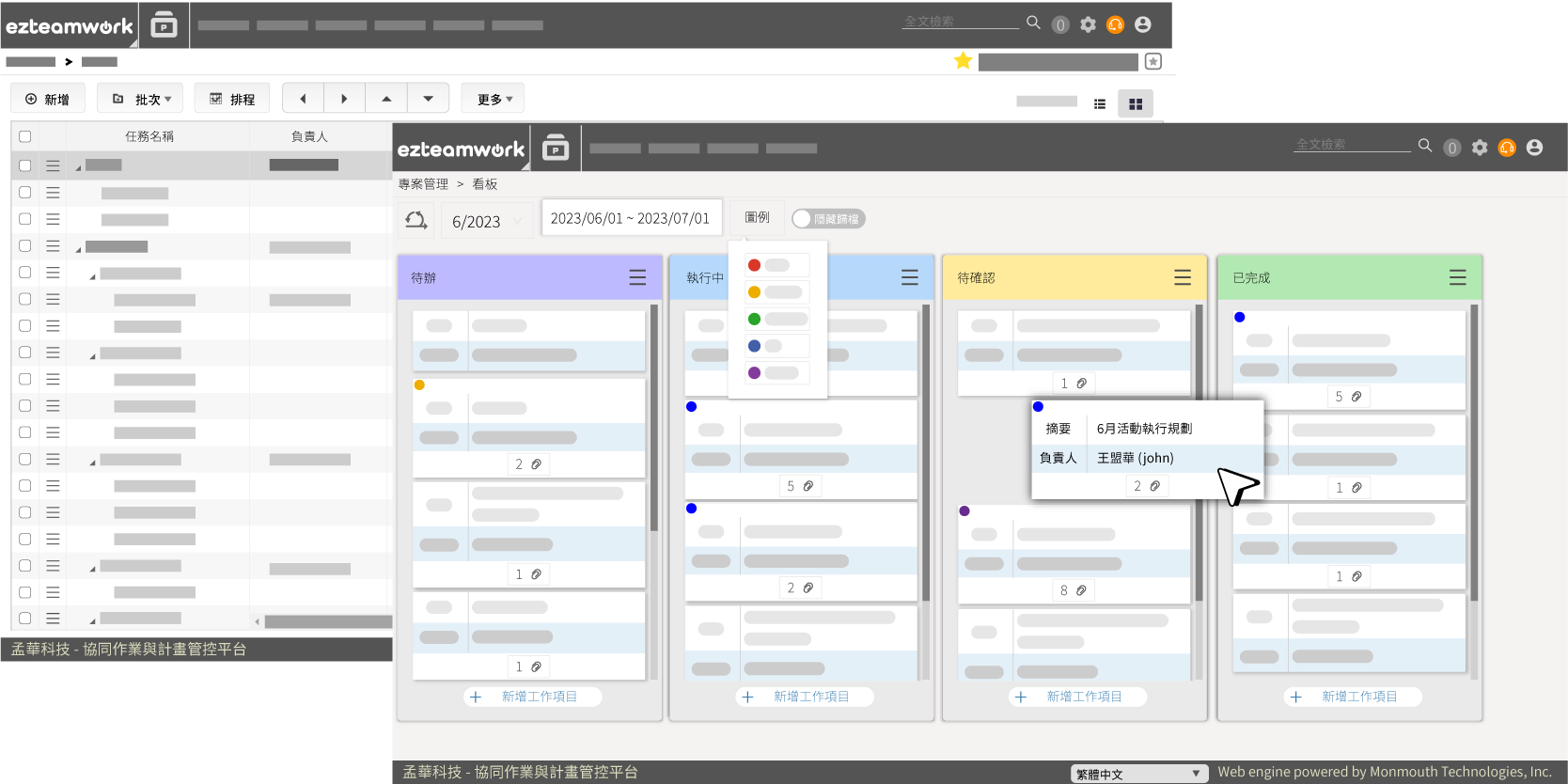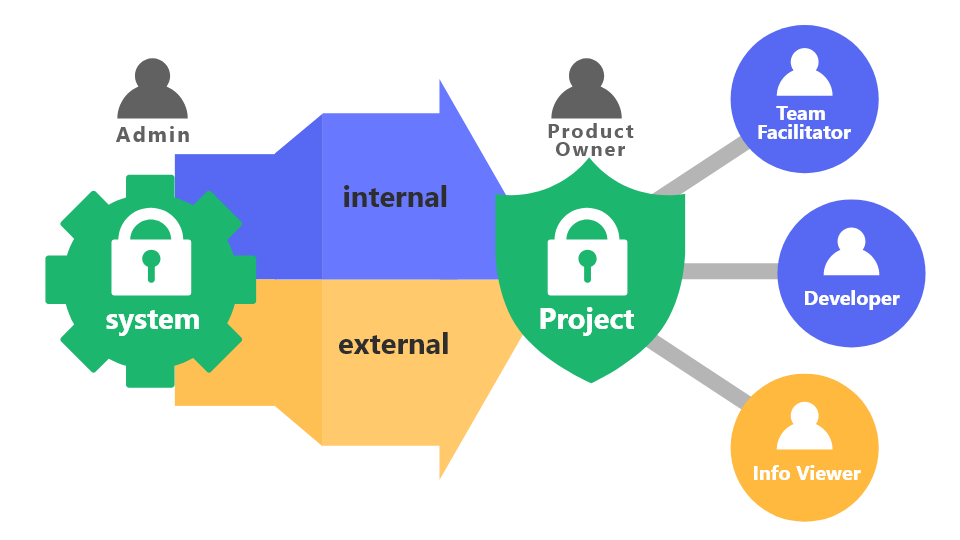ezteamwork Kanban
Agile Team Collaboration Tool
Tailored for Agile Teams and Scrum Projects
The eKban Agile Board is a software tool designed for Agile team management. It offers a visual digital board and intuitive drag-and-drop operations, making it versatile for various daily work and Scrum Agile development management. It effectively enhances process execution efficiency and shortens the development cycle.
The eKban Agile Board is a software tool designed for Agile team management. It offers a visual digital board and intuitive drag-and-drop operations, making it versatile for various daily work and Scrum Agile development management. It effectively enhances process execution efficiency and shortens the development cycle.
Master Your Work, Accelerate Output
Reduce Development Costs and Risks
Increase Transparency and Focus
Enhanced Collaborative Communication
Flexible and Diverse Board Management Applications
Single Board Task Management
Commonly used for departmental task management, as well as individual work management and routine to-do lists.
SCRUM Agile Project Board
Suitable for agile projects with high variability and rapid delivery, utilizing iterative management for phased outputs.
Flexible and adaptable board design
Build an agile team to enhance team productivity and respond quickly to customer needs.
FAQ
What are the benefits of using an Agile board for management?
The Kanban is an Agile methodology, and Kanban management tools are currently widely used in the market, such as Trello, Jira, and Monmouth Technologies's eKban. They provide visual digital boards that make work progress and execution processes clear at a glance. Compared to other management methodologies, Kanban management offers many advantages, including:
- The Kanban board makes work details and execution progress transparent.
- Team members can quickly report progress, participate in discussions at any time, and grasp the overall progress.
- The team can collaborate more closely.
- The team focuses on delivering outputs within short time frames.
- Allows for a more precise understanding of delivery schedules.
- Avoids overcommitting to schedules or delayed deliveries.
- Avoids uneven workload distribution or insufficient human resources.
What are the differences between eKban Agile Kanban and other common free Kanban tools on the market?
eKban Agile Kanban and most Kanban tools offer rich Kanban management features, but they differ in terms of target users and product features. The main distinctions are:
- Monmouth Technologies' eKban Agile Kanban management provides both iterative cycles and Kanban management, allowing the creation of Scrum boards or general boards with more flexible applications. Many free tools, on the other hand, only offer simple Kanban boards, directly entering a single board upon login, lacking the concept and management features of iterations, and are less suitable for teams following the Scrum development model.
- Most free tools are designed for individual and team use. Users register personal accounts online, and then board owners grant permissions for their team members. As a result, personnel changes and permission management can be quite complex. eKban Agile Kanban management is designed for the operation of enterprise organizations. System administrators set up internal and external user accounts, allowing for differentiated permission management at the system and project levels.
- The design of eKban Agile Kanban management emphasizes overall team collaboration management, while individual customization focuses on improving personal work efficiency. For example, it provides a personalized overview page, allowing members to quickly understand the assigned tasks for each project and report progress.
- Most free tools have weaker integration with project management, while eKban provides project document management instead of simple work attachments. This makes it easier to manage and archive the overall project delivery. Additionally, it can integrate with ezteamwork's project WBS, enabling hybrid project management. This allows teams to flexibly use both WBS Gantt chart scheduling and progressive management with Agile Kanban in different execution stages.
What is a Burn Down Chart? How to use a Burn Down Chart to control work progress?
A Burn Down Chart is a graphical representation of the remaining work over time. It consists of both the horizontal (X) and vertical (Y) axes, where the horizontal axis represents time, and the vertical axis represents the amount of work remaining. It provides an intuitive prediction of when all the work will be completed, commonly used in software development but applicable to monitor other types of workflows. The chart illustrates the relationship between remaining work and time, serving as a reminder of project progress and tasks to be completed. The horizontal axis displays workdays, while the vertical axis displays remaining work. The Burn Down Chart is a visual representation of the remaining tasks before project completion. It is a valuable tool not only for showcasing work progress but also for exposing work issues, aiding in risk control.
